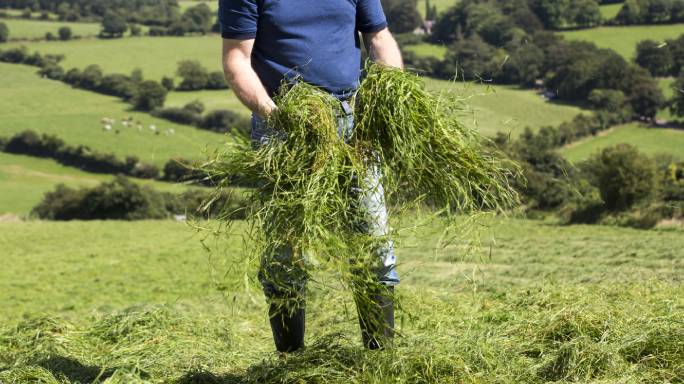First cut silage: Tips for maximum yield and quality

Although the recent weather might not suggest it nevertheless 1st cut silage will not be long upon us.
The aim should be to close silage ground in early April with a target harvest date in mid-May. This is to achieve the highest quality of silage as possible. We have seen over the recent weeks the impact silage quality can have on milk performance when fed in early lactation. Ideally silage quality should be 75% DMD or greater to maximise the intake potential and energy value of the silage while ensuring sufficient quantity is available for challenging grazing conditions in spring we seem to be experiencing more. This drives down feed costs and boosts animal performance in weanlings, finishing cattle and milking cows. A rolling reserve of 25% remains a core principle of managing risk on farm.
|
For the milking cow |
|||||
|
DMD% |
80 |
75 |
70 |
65 |
60 |
|
Conc Required for 27 litres |
6 |
6.5 |
7.5 |
8.5 |
10 |
|
Conc Required for 32 Litres |
7.5 |
8.5 |
9.5 |
10.5 |
12 |
Crop dry matter (DM) yield at harvest remains the single most important factor determining the cost per tonne of silage in the pit. However, it is necessary to consider the yield of forage DM across the year as a whole, not just from a single cut. Delaying 1st cut silage provides no advantage in total DM production to due to poor yields at 2nd harvest. The delayed second cut further as a result of the later 1st cut swards would reduce availability of autumn after-grass and negated any silage yield benefits. Grass silage is like a perishable food in terms of quality. Every day past heading date can reduce DMD by up to 0.5 units. A 10-day delay from late May into early June can turn your main winter forage from high quality to maintenance-only feed.
To maximise quality and yields of 1st cut and subsequent cuts it is imperative to apply the appropriate amounts of nitrogen, phosphorus (P) and potash (K) and lime based on your soil analysis at the correct time through the year. Targeted use of slurry is a great way to build-up of P and K.
- Nitrogen is vital to drive growth to secure sufficient grass for 1st cut silage but to maximise its efficiency it is essential to focus on the other nutrients as well.
- Phosphorus is a key nutrient for grass, and its role in energy supply, root growth and tillering makes its availability crucial for silage yields. Phosphorus demand peaks in line with peak grass growth in April and May.
- Potash deficiency is often called the “hidden hunger” as crop K requirements are often large and symptoms to a K deficiency can be quite difficult to identify during the growing season. The main symptom would be reduced yields, but quality is also at risk. Potash plays an irreplaceable part in the activation of enzymes, which are fundamental to metabolic processes, impacting protein levels and sugar concentrations.
- Sulphur also plays a crucial role in healthy growth and development of silage crops. Adequate sulphur levels in the soil are particularly important to optimise nitrogen utilisation by the sward. Sulphur deficiency can reduce plant vigor, decease photosynthesis activity and ultimately lower yields and inferior silage quality.
First Published 25 March 2024
Tagged with: Dairy
